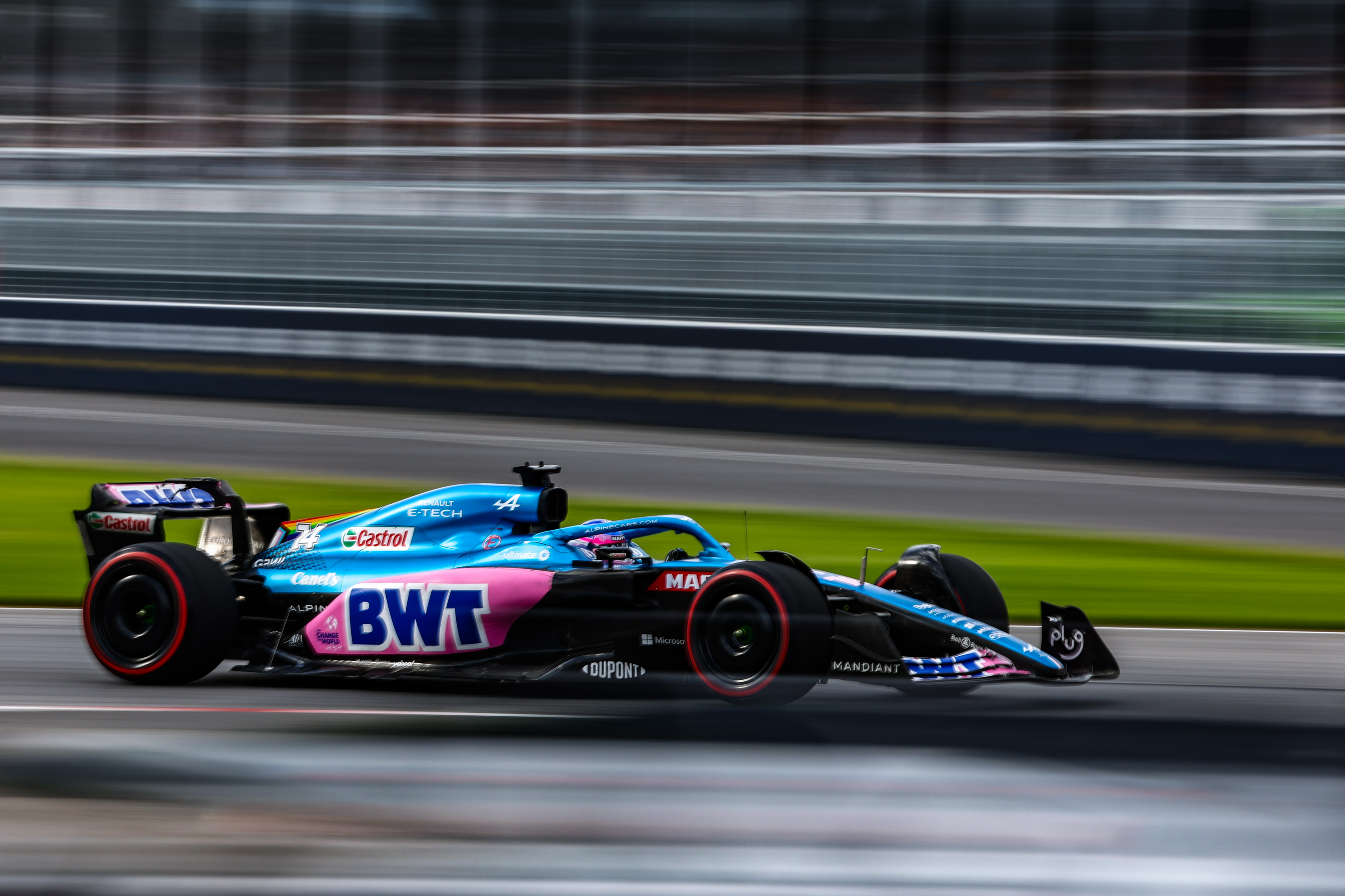Up Next

While the FIA was monitoring how hard each car was crashing into the track surface, the teams were getting on with their usual job of getting into competitive shape around a warm but windy Montreal.
Thursday’s thunderstorm had wiped the track green and there was a lot of track evolution which combined with high track temperatures seemed to be making for an unusual tyre comparison where the soft had only a marginal single lap pace advantage over the medium and where the hard C3 looked the fastest tyre of all over a stint.
This is probably very significant in analysing the simulated race pace because Red Bull and Ferrari ran completely opposing programmes.
Just after FP2 finished the skies darkened, the lightning struck once more and so the likelihood is the teams will face a similarly green track at the start of FP3 tomorrow.
Less than one-tenth of a second separated Max Verstappen’s Red Bull and Charles Leclerc’s Ferrari in the ultimate times, both set on brand new soft tyres, but with Leclerc running a compromised power unit spec ahead of an expected change to a new unit tomorrow, given that his third electronic control unit used in FP2 has guaranteed him a grid penalty anyway.
As has become the pattern recently, the Red Bull seems to better combine pace with reliability and as such Verstappen is looking extremely strong.
Long run pace in FP2
| 1 | Sainz | 1m17.604s | 6 laps | medium |
| 2 | Alonso | 1m18.064s | 9 laps | hard |
| 3 | Verstappen | 1m18.087s | 17 laps | medium |
| 4 | Ocon | 1m18.161s | 10 laps | hard |
| 5 | Sainz | 1m18.237s | 8 laps | medium |
| 6 | Vettel | 1m18.301s | 5 laps | soft |
| 7 | Perez | 1m18.371s | 13 laps | medium |
| 8 | Leclerc | 1m18.464s | 15 laps | soft |
| 9 | Vettel | 1m18.598s | 9 laps | soft |
| 10 | Norris | 1m18.804s | 10 laps | medium |
However, the pace superiority suggested by Verstappen’s long-run times may be misleading. Red Bull concentrated its run around the medium C4 tyre, Ferrari on the soft C5. With the track temperature running at around 40deg C when the simulations were being done, the soft seemed to be somewhat overwhelmed.
The superiority of the medium was only underlined when Carlos Sainz tried it for a brief five-lap run at the end. Because he was on end-of-stint fuel levels by this time, his average of 1m17.6s cannot be directly compared to Verstappen’s average of 1m18.1s, which not only was a much longer run but would also have been initiated with a fuel load around eight laps heavier.
So the real Ferrari pace on a comparable tyre is likely somewhere between Sainz’s and Leclerc’s. With Sainz by default almost certain to be heading Ferrari’s challenge in the race because of Leclerc’s penalty, he has a tough challenge ahead of him.
Sergio Perez is under-represented in the single lap times as he did only one lap on fresh softs and it wasn’t a clean one. In the long runs his pace was within 0.2s of Verstappen’s and it would be a surprise if he wasn’t somewhere near the front, setting up a two against-one dynamic between Red Bull and Ferrari.
Both Alpine and Aston Martin have made a lot of progress of late. Uniquely, Alpine concentrated its long run on the hard tyre and as can be seen by the table, it looked highly competitive, particularly in Fernando Alonso’s hands. Alonso was shaded by Vettel’s Aston Martin in the single lap simulations.

The significance of that is that both were faster than either of the Mercedes, who ran with very different set-ups in FP2, even though they’d converged to the standard floor after Lewis Hamilton ran in FP1 with the new cut-out floor. This was deemed an unsuccessful experiment.
“It was pretty much like every Friday for me,” Hamilton said. “The experimental floor didn’t work, nothing we do to this car seems to work. For me, it was a disaster, it’s like the car is getting worse. This is the car for the year, we’ll have to tough it out, build a better car for next year.
“One kerb touch and car goes flying. It was just a monumental fight to keep it out the wall. When it bounces and leaves the ground, when it lands it can go in lots of different directions, jumps, hops, grips, jumps, right on the edge. We’ve raised the car and it doesn’t make a difference. We’ve ticked off lots of different things and they don’t work.”
The car ran low in the morning and a raised ride height for FP2 controlled the bouncing better but left it even more lacking in rear-end grip.
George Russell wasn’t quite so downbeat. “I think in race pace we can still be the third-quickest car. But we need to work really hard making sure we qualify ahead of midfield,” he said.
“I think our race car can put us in that third position spot but if we qualify it out of position it can be a bit tricky, as we can see how Alonso and Vettel in particular look very quick here.”






